I think this educational system is wrong, I have also experience in this subject and I have found children suffer because of pressure from school and parents. ''No chance for European to compete with Chinese students?'' Is it a bit cruel to say?
9 facts about Chinese education I learned while being a teacher in China
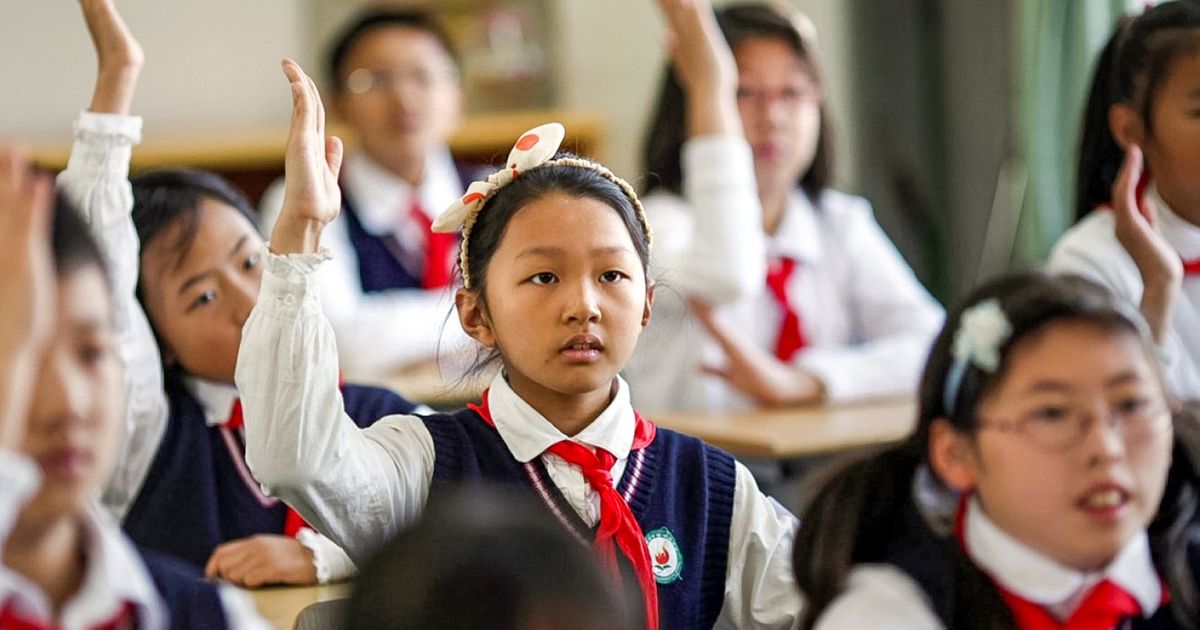
Living in China is not easy. When there are more than 1.5 billion people like you in a country with no social guarantees, you don’t have a choice other than to fight and claw your way up. Chinese kids, though, are quite ready for such a challenge because their hard work starts with the very first year at school.
I used to work as an English teacher at four different schools in China, and it’s very interesting for me now to compare the European and Chinese approaches to education.
Children in school uniform, sports suits, at a lesson dedicated to Earth Day. Liaocheng, April 2016.
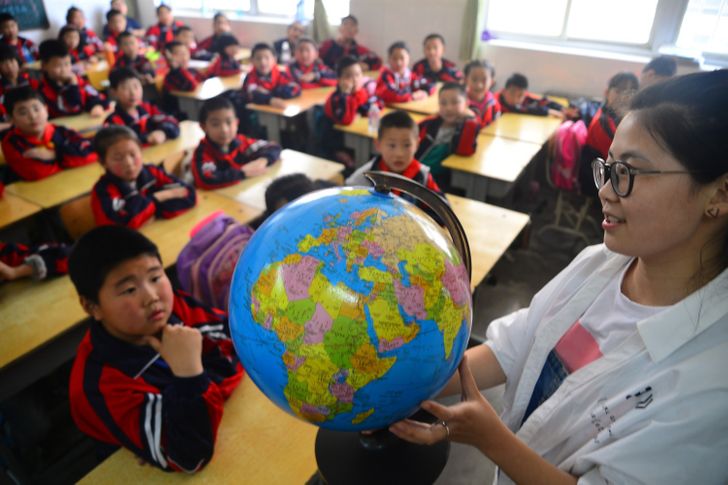
- Many Chinese schools don’t have central heating, so both teachers and students leave their overcoats on in winter. Central heating is only present in the north of the country. Buildings in Central and Southern China were built for a warm climate, which means that in winter, when the temperature may fall below 32°F, the only means of heating are air conditioners. School uniforms are all alike: sports suits with broad pants and a jacket. Their design is similar with the exception of the colors and school emblems on the chest. All school premises are confined by large iron gates which are kept closed at all times. They are only opened to let the schoolchildren out.
- Schools in China practice warm-ups every day (and not just once a day) and do a general lineup. A typical school morning starts with a warm-up, then goes to the lineup where kids learn the main news and see the school or state flag raised. All children do eye exercises after the third lesson — they press special points on their bodies to relaxing music and an instructor’s recorded voice. In addition to the morning exercise, there’s also an afternoon one at about 2 p.m. Music starts playing, and all the kids pour out of their classrooms (if there’s not enough space inside) and begin raising their arms to the sides and up and hopping in place.
Chinese schoolchildren exercise on the roof of their school in Jinan.
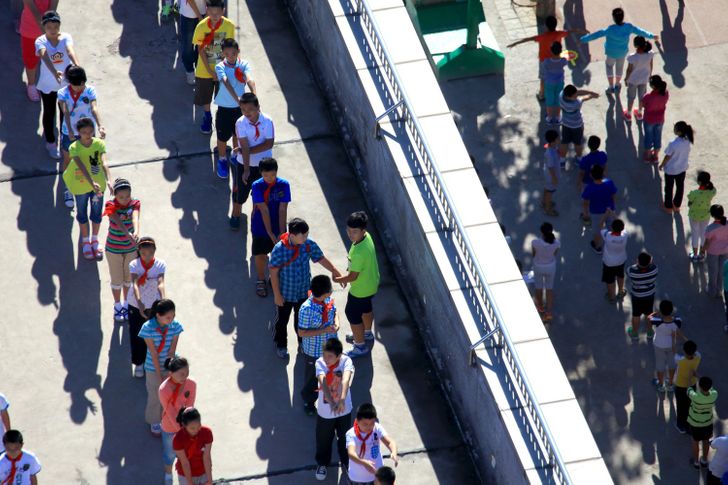
- The big break, which is also the lunch break, usually takes a whole hour. During this time, kids manage to eat at the canteen (if there isn’t one, they receive special lunchboxes), chase each other, shout, and be the little kids they are. Teachers at all schools get free lunches — and a good one, I should say. The lunch is traditional: one meat dish, two vegetable ones, some rice, and a bowl of soup. Expensive private schools also offer fruits and yogurt. The Chinese are hearty eaters, and this tradition applies to schools as well. Some elementary schools also practice a ’nap time’ of several minutes after the lunch break. By the way, my students fell asleep a couple of times right in the middle of a lesson, and I had to force myself to wake up the poor little ones.
A small, by Chinese standards, school lunch: eggs with tomatoes, tofu, cauliflower with peppers, and rice.
- Teachers are treated with great respect. They are always called by their last name with the ’Teacher’ prefix: for instance, ’Teacher Zhan’ or ’Teacher Xian’ or even just ’Teacher.’ At one school, students — both mine and others — gave a bow to me when we met.
A break between lessons with traditional drums in the town of Ansai.
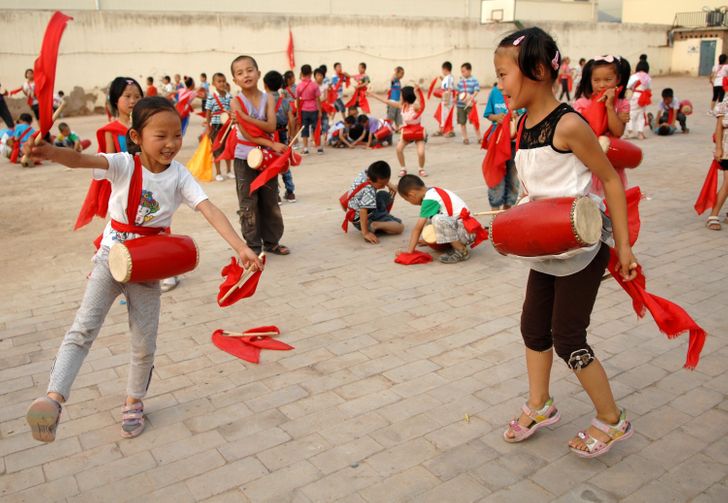
- There is an academic ranking poster hanging in each classroom which gives an incentive to study harder. The grades go from A to F, where A is the highest grade equaling 90-100%, and F is an unsatisfactory grade of 59%. Encouragement of good behavior is an important part of education. For example, a student receives a star of a certain color or additional points for a correct answer or model conduct, while talking during lessons and misbehavior lead to a loss of stars and points. Students’ ranking is updated daily and is visible to everyone on a special chart on the blackboard — an open competition.
- Chinese children study for more than ten hours a day. Lessons usually start at 8 a.m. and end at 3-4 p.m. Then kids go home and do their neverending home tasks until 9-10 p.m. In big cities, schoolchildren always have additional lessons with tutors, music classes, art studies, and sports clubs on weekends. The competition is so high that parents suppress their children from a very young age — if they don’t receive high grades in their school graduation exams (mandatory education in China takes 12-13 years), there’s no way they’ll be admitted to a university.
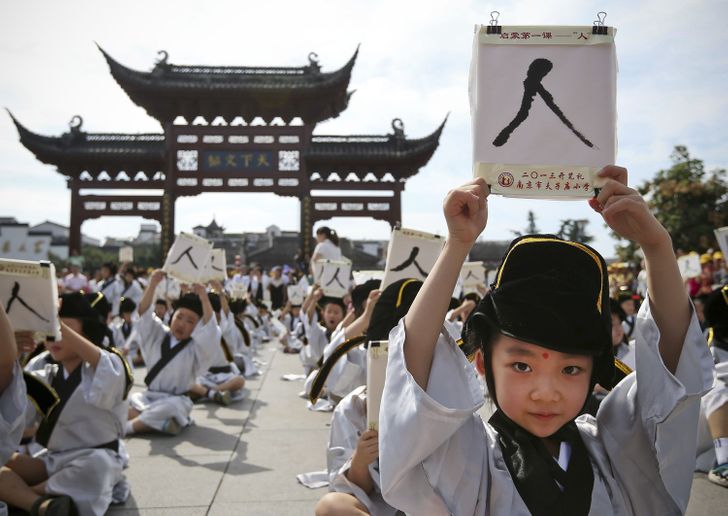
First-year students of Nanjing Confucius School take part in the ceremony of drawing the ’zhen’ (’man’) hieroglyph on September 1, which begins their studies.
- Schools are divided into public and private ones. The cost of studying at a private school may reach $1,000 per month, but the level of education there is much higher. Learning a foreign language is an especially important subject there. Two or three classes of English a day, and students of elite schools already speak the language freely in their fifth or sixth year. However, Shanghai, for instance, has a special state-funded program that allows foreign teachers to work in ordinary public schools.
- The education system is based on verbatim learning. Children just sit and learn lots of material by heart, while teachers demand automatic reproduction without really caring about whether their students actually understand what they say. However, there are more and more alternative schools arising today, based on the Montessori or Waldorf methods, that are aimed at developing the artistic abilities of kids. Of course, such schools are private, and studying there is expensive and accessible for very few people.
Kung fu school classes.
When the education is finished, parents see a disciplined young man or woman with a right to teach kung fu and a fair chance of having a career. Most well-known masters of kung fu went through this very school of life. There’s also a widely spread custom to send weak and sickly children here for a year or two to make them healthier while literally living kung fu or tai chi.
Wherever Chinese kids may study, be it a kung fu school or an ordinary one, they adopt three principal traits from early childhood: the skill of working hard, discipline, and respect to those above them in age or position.
They are taught from a young age that they should be the best at whatever they do. Maybe that’s why the Chinese become leaders in science, culture, and art. Competition with Europeans, who grow up in a much milder environment, is actually no competition for them because we are not used to studying for ten hours a day, every day, for many years.
Comments
Can't believe you can post without any reason?
Some part is not truth. There is no one can slap student in China, because it’s illegal.
Teacher will no longer can teach in his or her whole life, also will be sent to jail.
It sounds like this article was heavily influenced by the author's individual experience, which may not in all cases be an accurate reflection of the larger education system as a whole. Sever of the listed facts look correct to me; lack of central heating in the southern half of the country, long school days, long midday breaks, warm ups, respect for teachers, importance of class rankings, teacher centered classrooms with a stress on memorization. However some things appear distorted to me.
1. As Yewen Zhu noted above corporal punishment is illegal, and teachers can get in serious trouble for it, that does not mean it does not happen, but it is certainly not school policy.
2. My understanding is that public schools are generally considered superior to private schools because the public schools have stricter entry requirements while most private schools take anyone who can pay.
3. I may be wrong, but I don't think Kungfu schools are not as common as the author implies. I believe they are more of a special option that some people choose.
I am used to learn at a chinese school, and the school i was learning at is 100% worse than the schools at the U.S
1. during the breaks, all you can do is read a book and wait for it to be over. I was just visiting so I was lucky to find there was an english book, though only 1. And believe me, it is not fun to read a 5 year old book 10 times a day
2. you can't really do anything during lunch, but i do not know what the food is since i leave at lunch.
3. in the bathroom there isn't any stalls for the boys room, and my sister told me there is no door in the girls bathroom
These are all the things from my school, but i don't know if the other schools do this too.
Related Reads
I Refused to Cover for a ‘New Mom’ Coworker—HR Got Involved

I Refuse to See My Stepfather Again After He Tried to Cancel My Mom’s Savings

I Refused to Bring Kids on My Solo Vacation, and Now My Family Is Furious

My MIL Mocked Me at My Husband’s Birthday Party—I Gave Her a Brutal Reality Check

I Caught My MIL Secretly Filming Me While I Breastfed My Baby

My Niece Uninvited Me From Her Wedding the Night Before — Then Blamed Me for Ruining Everything

I Refused to Take My Stepdaughter on Our Family Trip

My Parents Secretly Drained My Entire Savings Account—Then I Turned the Tables on Them

10 Real Life Stories Where Quiet Kindness Spoke the Loudest
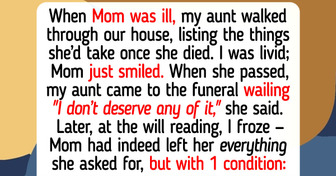
I Closed My Doors to My Entitled In-Laws on the Weekend and I Don’t Regret It

I Refuse to Stop Using My Pool Just to Please My Neighbor — Our House, Our Rules
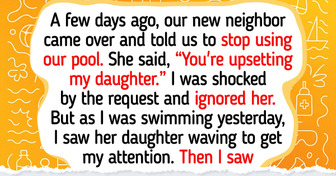
13 People Share the Things They’ve Been Hiding From Their Partners for Years
